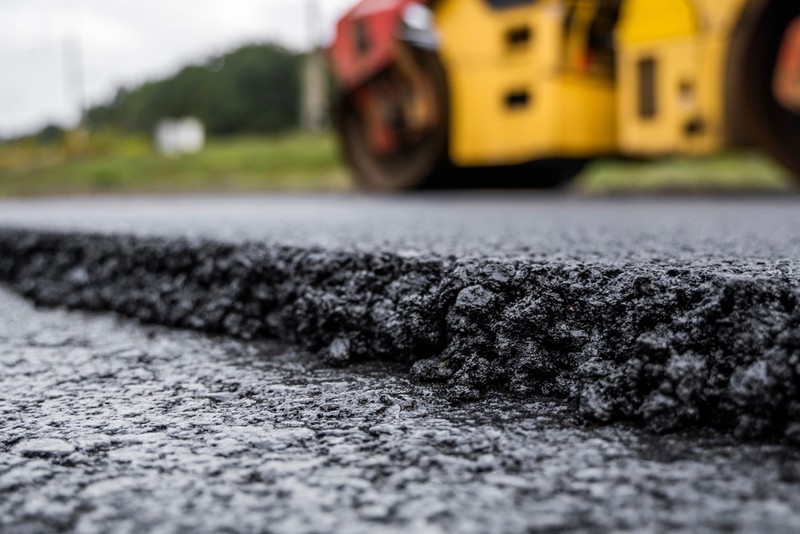Elevate Sidewalk Efficiency: Cold Mix Asphalt Sealing Tips
Elevate Sidewalk Efficiency: Cold Mix Asphalt Sealing Tips
Blog Article
Cold Mix Asphalt Vs. Hot Mix Asphalt: Which Is Right for You?

Make-up Differences
Cold mix and hot mix asphalts vary substantially in their composition, with distinctive features that impact their efficiency and applications. Cold mix asphalt is produced by emulsifying the asphalt binder with water and an emulsifying representative before blending it with accumulation. This approach enables the asphalt to be workable at lower temperatures, making it ideal for temporary repairs and for use in cooler climate conditions. Hot mix asphalt, on the other hand, is produced at high temperature levels, typically between 300-350 ° F, which helps to achieve much better compaction and a much more sturdy last item. The hot mix asphalt manufacturing process includes heating the aggregate and asphalt binder independently before incorporating them at the asphalt plant.
Moreover, cool mix asphalt tends to be much less dense and much more adaptable than hot mix asphalt. This flexibility makes it far better fit for locations with higher degrees of motion, such as driveways or roads with rush hour. In contrast, hot mix asphalt is understood for its high resilience and resistance to rutting and fracturing, making it a preferred option for freeways and high-traffic roads where long life is critical.
Installment Process Differences
The process of mounting cold mix and hot mix asphalt exhibits significant variances in their treatments and needs. Cold mix asphalt, being an extra versatile product, can be applied directly from the bag or container onto the hole or harmed location. It calls for marginal preparation work, such as cleansing the area and compacting the cold blend with hand tools. This makes it a practical option for quick and short-term solutions. In contrast, warm mix asphalt demands a much more sophisticated installation procedure. It includes warming the mix to heats before laying it down on a properly prepared base. The prep work includes condensing the base, applying a tack layer, and using hefty equipment like pavers and compactors for a durable and smooth finish. As a result of the heating demands, warm mix asphalt installments are commonly carried out by professionals with customized devices, ensuring an extra structurally audio and irreversible outcome.
Longevity and Longevity Elements
When considering asphalt alternatives, sturdiness and longevity are crucial factors to review for lasting sidewalk performance. Hot mix asphalt (HMA) is understood for its exceptional longevity and long life.
In terms of longevity, HMA commonly surpasses CMA due to its remarkable stamina and resistance residential properties. HMA sidewalks have a longer life span, calling for much less frequent fixings and maintenance, which can equate to cost financial savings over time. In addition, HMA sidewalks are extra conveniently personalized to meet certain task needs, additionally enhancing their durability.
Price Factors To Consider
Taking into consideration the financial ramifications is an essential facet when assessing the selection in between warm mix asphalt (HMA) and cold mix asphalt (CMA) for pavement jobs. While the first cost of hot mix asphalt is typically higher than that of cold mix asphalt, HMA typically gives a more cost-effective service in the lengthy run due to its remarkable toughness and durability.
In addition to product expenses, it's necessary to think about the expenditures linked with installation and maintenance when comparing HMA and CMA. HMA usually needs specialized devices and competent labor for proper installment, which can influence general project prices. On the other hand, CMA is simpler to function with and can usually be applied making use of easier techniques, possibly reducing installation expenditures. Eventually, the choice in between HMA and CMA should take into consideration More Info not simply the first cost but also the long-term financial ramifications to determine the most cost-efficient choice for the details pavement project.
Environmental Influence Contrast
Contrast of the environmental impacts in between hot mix asphalt (HMA) and chilly mix asphalt (CMA) exposes distinctive distinctions in sustainability methods. HMA manufacturing calls for heats, resulting in enhanced power consumption and greenhouse gas emissions. The procedure additionally launches unstable natural compounds (VOCs) and harmful air toxins (HAPs) right into the atmosphere. On the other hand, CMA is produced and used at lower temperature levels, lowering energy usage and emissions dramatically. The lower manufacturing temperature levels of CMA lead to reduced fuel usage and lower levels of carbon dioxide discharges, making it a much more eco friendly option.
Furthermore, the use of CMA typically involves recycling existing asphalt pavement, promoting resource conservation and decreasing the quantity of waste sent out to garbage dumps. By choosing for CMA over HMA, roadway building and construction projects can contribute positively to ecological conservation initiatives.
Verdict
Finally, the selection between cool mix asphalt (CMA) and hot mix asphalt (HMA) depends on different elements such as make-up, installation procedure, sturdiness, long life, cost, and environmental effect. cold mix asphalt. While CMA offers a economical and fast solution for small repair services, HMA makes certain find this remarkable resilience and longevity for hefty web traffic locations. Think about these factors meticulously to identify which sort of asphalt is the right selection for your paving needs

Thinking about the financial implications is a vital element when evaluating the option in between hot mix asphalt (HMA) and cool mix asphalt (CMA) for sidewalk jobs. While the first price of hot mix asphalt is commonly higher than that of cool mix asphalt, HMA usually provides a much more cost-effective service in the their explanation long run due to its exceptional resilience and durability. cold mix asphalt.Contrast of the ecological impacts in between hot mix asphalt (HMA) and chilly mix asphalt (CMA) reveals distinct distinctions in sustainability techniques.In conclusion, the choice in between cool mix asphalt (CMA) and warm mix asphalt (HMA) depends on different elements such as make-up, installment procedure, longevity, durability, expense, and ecological effect
Report this page